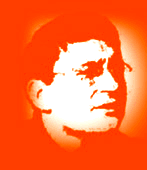Ferrua, Pietro
An Injury to One
A film by Travis WILKERSON
IWW (Industrial Workers of the World)Communication. FilmsstrikeÉtats-Unis. 19e siècleUnited States (USA). 20th CenturyFERRUA, Pietro (Piero) Michele Stefano (1930 - ....)
USA, 2002
B&W and color
16mm., 53’.
Director: Travis Wilkerson
Script: Travis Wilkerson
Cinematography: Travis Wilkerson
Music: Various
Editing: Travis Wilkerson
Sound: Travis Wilkerson
Producer: Susan Fink
Production Company: Up Front Films
The title is the first part of the IWW motto, the second part of which reads “is an injury to all”: a solidarity credo for a self-managed union. This film is concentrated on one location: Butte, Montana, one of the major world producers of copper. The historical reconstitution goes back to the second part of the 19th Century, when Anaconda Corp. (the name itself evokes already a threat) starts exploring local mines. The statistics quoted affirm that the company, during its lifetime, extracted minerals worth 25 billion dollars. All that Anaconda left behind when ARCO took over were polluted water and soil. The pH. of earth composition reached the dangerous level of 2,5. The mine territory was denominated the First National Environmental Disaster Monument. In November 1995 a gaggle of geese was imprudent enough to stop overnight on that soil during their transmigration flight. While some succeeded in escaping (for how long, we don’t know) 342 had succumbed to an intoxication of cadmium, manganese, copper and zinc. During the mining years of Butte, tuberculosis decimated not geese but humans.
Since the 1870s, working conditions were harsh in the mines, and the union movement started denouncing the situation. But it was to no avail: three families dominated the business of copper extraction and they were completely deaf to any workers’ request.
When in 1905 the IWW was founded and some of the workers recognized themselves in that progressive union, they were fired for being considered socialists (a dirty word, then, and even now). In 1914, there was a revival of interest for copper needed for the war industry. The production increased, more people were hired, but the conditions did not improve. On June 8, 1917, there was a fire in the mines and 174 miners perished. On June 11, a strike was declared and a metalworkers union was founded. The mine owners blamed German secret agents for the turmoil and suppressed all dissent, which was easy because they owned also the local newspaper which would give only their version of the events. On July 18, a young anarchist who was not a German spy but, in self-defining words, 50% white, 50% Indian (American) and 100% IWW, named Frank Little (Little by name but very Great for his courage and devotion to the cause of the working class and striking miners) arrived in Butte on a union mission. For his first speech, the day after his arrival by train, 6,000 people attended his meeting. This talk was followed by two more presentations on July 25 and 27. More and more people attended. The capitalists were irate; on August 1 six masked men, claiming to be policemen, dragged him away from his hotel room, tortured and hung him.

Nobody was ever arrested for this crime, even though Frank Little’s funeral was the most imponent that ever took place in Butte. Subsequently all documents concerning him and his speeches disappeared from police archives.
The situation worsened which led to the Montana Espionage Act, then to the Montana Sedition Act, later known as the National Sedition Act, according to which aliens were considered enemies, many were arrested, some were shot, others deported while their American counterparts were condemned to long prison sentences, a foreshadowing to the infamous Palmer Raids.
It may be dangerous to denounce, even in retrospect, the “Butte 1917 events”. A writer such as Dashiel Hammett was arrested as late as 1951 for having betrayed the Anaconda secret. He had learned that $ 5,000 had been offered to kill Frank Little, and Hammet wrote about this.
We learn this and more by viewing this great film’ It was conceived as a documentary, with a minimalist style; very few dialogues and only a voice over narrator.
Ingenious framing of the black and white image. Four protest songs, performed instrumentally without a singer, punctuate this film: lyrics appear on the screen (the four scenes are shot in color). As with the Troubadours, these union songs tell us the story in a very compelling way. This is the director’s first film and was produced for academic purposes. It reveals a great mastery of the medium, is beautifully photographed and narrated and carries a very powerful human and social message.
Pietro Ferrua
